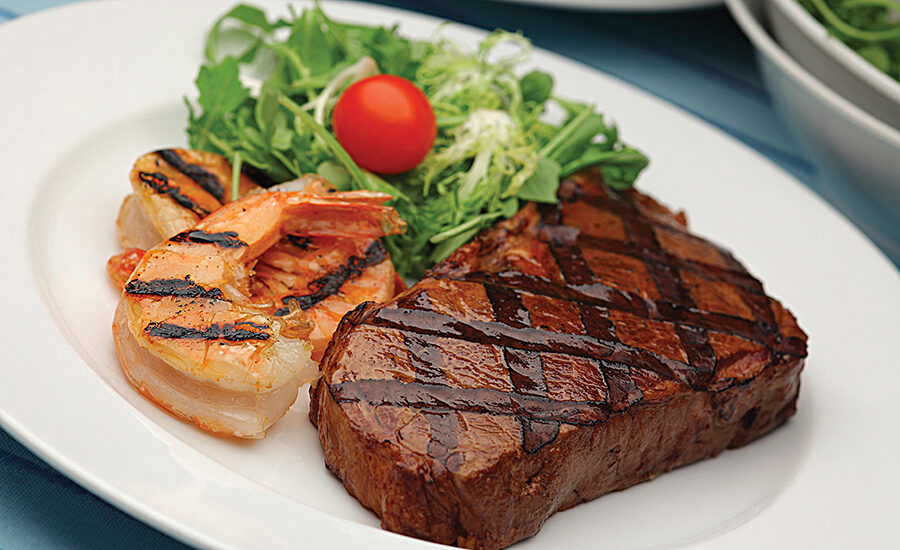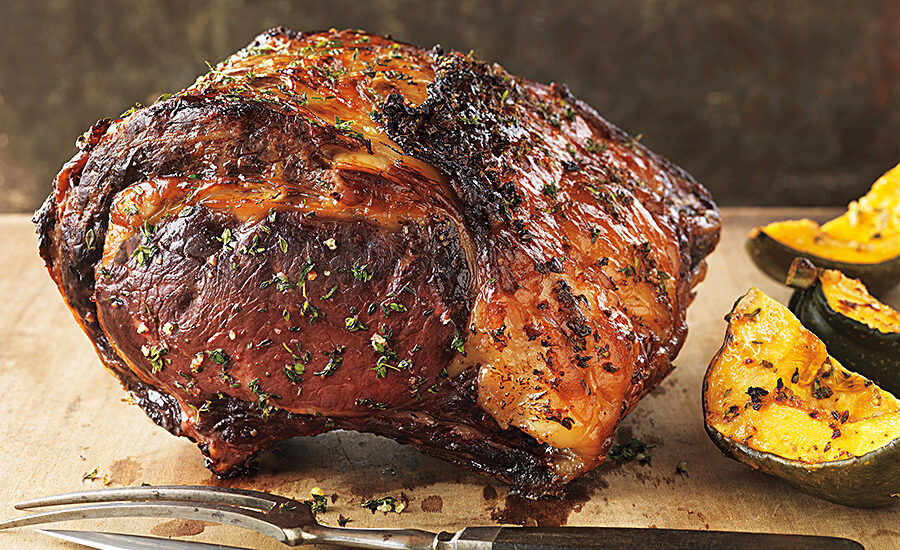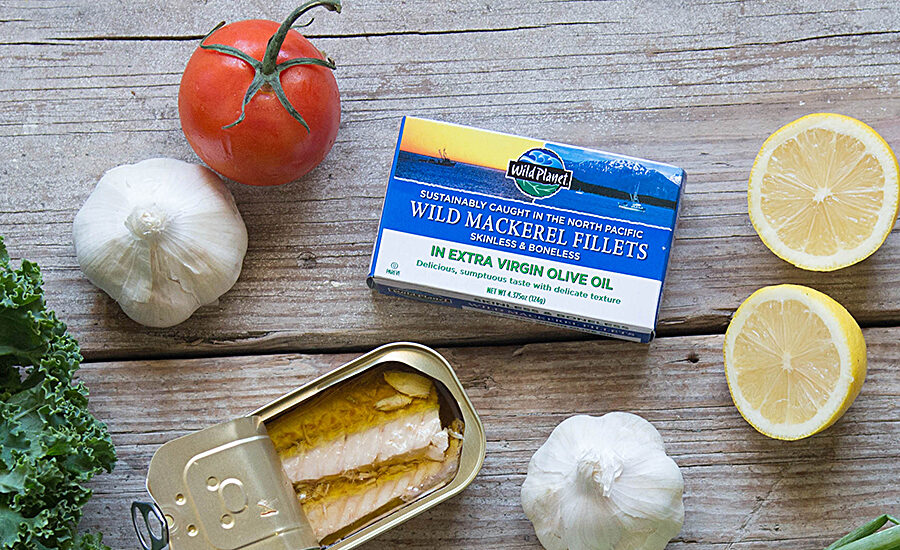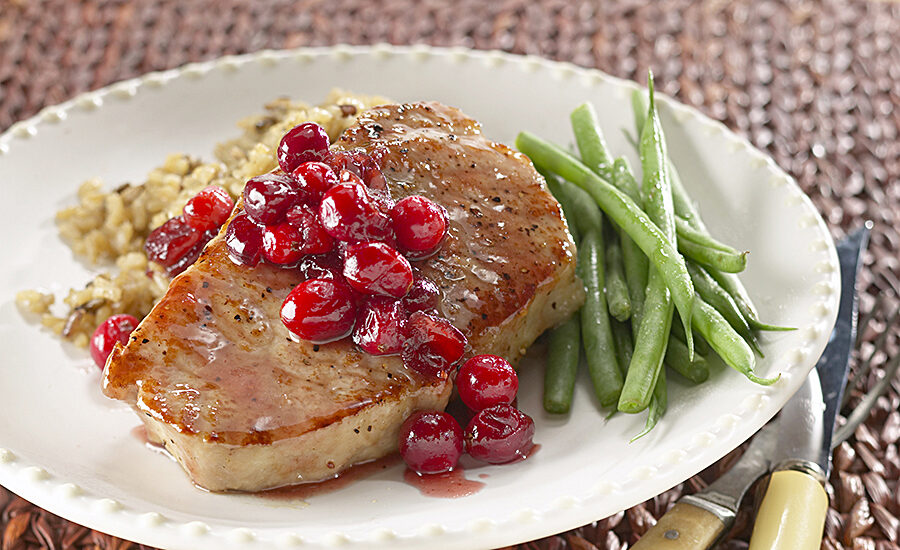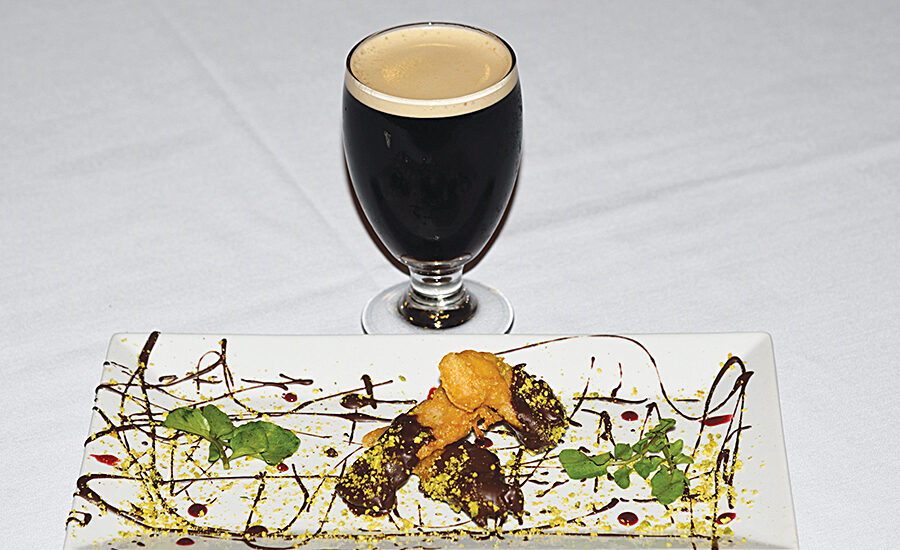Discover legal perspectives for processed meat producers >
While spicy flavors have been trending up all over, the real power in this heatwave has been with animal protein—meat, poultry and seafood. As with most food trends, the vanguard of this heat exchange is happening in restaurants and working its way into prepared foods nationwide.
Here, for example, is how international franchise Bareburger Organic, by Bareburger Group LLC, dresses one of its standard hamburgers: pepper Jack cheese, pickled jalapeño peppers and habanero mayo. Yet, when it comes to heat, even Bareburger is sitting on the cooler side of the Scoville scale compared to some hot new inroads in the fiery palate movement.
This spring, Jack in the Box Inc. revived its Blazin’ Chicken Sandwich, a chicken breast coated with spicy breading and fried, then topped with jalapeño peppers and a Ghost pepper-infused ranch dressing. Quick-serve giant Yum Brands Inc.’s Taco Bell chain dove into the fiery fast-food war last February, when it went Tex/Mex/Asian-fusion with a Sriracha Quesarito.
Wendy’s, fighting fire with even more fire, responded with a Jalapeño Fresco Spicy Chicken Sandwich (served with a side belly-bomb of Ghost Pepper French Fries, no less). Also, last spring, CKE Restaurants Inc.’s Hardee’s and Carl’s Jr. chains introduced El Diablo, a large, spicy hamburger. It features sliced jalapeños, as well as crunchy, breaded jalapeño “poppers”, spicy habanero bacon sauce and pepper Jack cheese.
The driving forces behind all the heat? Some industry wizards point to the increasing level of global travel and experience of other food cultures, not only by younger consumers but by military personnel, as well. Returning home, they’re looking for out-of-the-ordinary tastes, especially those that supply the extra Scovillian heat they experienced when dining abroad. Their palates also have been opened up to enjoying animal proteins that were far less familiar on the American meatscape a decade ago.
Jenny Zegler, a global trends analyst for consumer research group Mintel Inc., agrees. In a presentation for the Institute of Food Technologists’ annual meeting and food exposition, Zegler noted, “When we look across our consumer data, we have a clear-cut group of consumers who are very interested in those even-more-exotic flavors, and (in) getting even more adventurous.”
The Right Cut
Meat experts are definitely paying attention to these trends.
“Professional chefs are using bolder flavors for new twists on comfort foods,” says Brett Erickson, director of value-added products for the Certified Angus Beef brand. He further points out that such culinary developers also are using a wider selection of fresh beef cuts. “Our culinary team has been incorporating Asian spices, Jamaican jerk and tamarind into our dishes.”
Erickson, too, recognizes the quickening pace toward heat. “Consumers are embracing more hot and spicy foods,” he explains. “Sriracha, chipotle, jalapeño and habanero are now mainstream flavors in grocery aisles and on restaurant menus, and have applications for meat products. Processors such as Golden West Food Group Inc., are using ready to heat-and-serve, marinated thin meats in a variety of meals. Asian-style Pineapple Teriyaki and Jalapeño Lime are among the company’s current options for those.”
Zach Levenson, chief operating officer with the Golden West Food Group, says the company produces a variety of meat products for food service and retail, including such well-known brands as Jack Daniels, Guy Fieri, Certified Angus Beef and the American BBQ Co.
“Smoke is important,” Levenson says, “and we’re getting more requests to develop marinated meats with more heat. We’ve developed some on our own and taken those concepts to our customers, too.”
Lance Youngs, senior director of R&D and corporate executive chef for John Soules Foods Inc., sees a definite trend toward Korean cuisine and believes it is being driven by Millennials (noted for their more adventurous tastes). Youngs has been devoting attention to products such as Korean bulgogi, a classic beef dish using a marinade made with tamari, red chili pepper, ginger and garlic. Tamari, a class of gluten-free soy sauces made with no wheat, is traditionally a byproduct of miso paste.
Wine and spirits have been used in sauces and marinades since cooking began. But there seems to be a resurgence in using reductions of distilled spirits in such products. Youngs suggests that spirits, as ingredients, could even be one of the growing new waves for sauce bases. “Whiskeys and rums add interesting new tastes” to protein, he says.
Big Stick
Meat snacks, such as jerky, have transcended from age-old staples of gas station/convenience stores to a trendy, gourmet favorite—with sales growth that exceeds traditional sweet or salty snacks. Two keys to its success have been identification with the “protein is healthy” trend and the shift to using upscale proteins, such as venison, bison and lamb.
Consumer research outfit NPD Group Inc. notes the meat snack market has grown among adults by almost 20% in the past five years, with Information Resources Inc. determining sales revenue in the channel as growing from slightly above $1.5 billion in 2009 to nearly $2.5 billion by the third quarter of 2014. Dollar sales last year alone had grow by 13%.
“Meat snacks are an example that not all snacks are equal in terms of meeting different consumer needs,” says Annie Roberts, vice president of NPD’s SupplyTrack. “Knowing the needs products address is important in making sure you’re getting the right products in the right places for the right people.”
The resurgent belief that protein is “good for you” is the primary reason consumers are eating more meat snacks. Around 25% of all adults who say they want more information about their food claim they look for protein on nutrition labels, and half of them think the best source is animal protein. An ounce of beef or turkey jerky can have as much as 13g of protein. Meat snacks are being formulated to be low in fat, too—an important factor for the skinny jeans generation.
Taquitos.net, a website that tracks snacks, lists 104 different kinds of jerky, and trade shows that preview what’s going to be hot a few years from now have reported a major increase in the number of companies producing gourmet level jerky products. Wild Zora Foods LLC has taken the definition of jerky into previously uncharted territory, too, launching meat snacks that hit all the current hot-trend buttons.
The company claims the meat it uses comes from animals raised humanely, without antibiotics or added hormones. Its products also are free of grains, gluten, soy, nuts, chemical additives, sugar or artificial sweeteners, and four of its varieties are dairy-free.
Unlike most jerky and meat-stick makers, Wild Zora adds organic vegetables and fruit to the mix. The company’s product line-up reads like a menu from a trendy Soho restaurant: Varieties include Chili Cayenne Apricot Beef, Parmesan Tomato Basil Beef, Barbecue Hickory Tomato Beef, Masala Spinach Turkey and Rosemary Spinach Lamb.
Thrillist Media Group Inc.’s Three Jerks Jerky start-up went way upscale to create a gourmet-style beef jerky from filet mignon. The high-end snack launched in Original, Memphis Barbecue and Chipotle Adobo flavors. Adhering to the edge of the envelope, the company also test-marketed “I Can’t Believe It’s Not Hamburger” jerky and “Maple Bourbon Churro” jerky products. All of the company’s snacks contain no nitrates, nitrites or preservatives and claim a “moist and tender” texture.
Meet the New Meat
Although beef is still the jerky meat of preference, turkey is the fastest growing. Other meat snack types include bison, buffalo, elk, deer and salmon. The aforementioned Bareburger chain offers meat choices beyond the usual beef, turkey and chicken—burgers from bison, elk or duck are readily available.
Goat meat is one of the most widely consumed meats in the world yet is almost non-existent in North America. It is trending up fast, however, as immigrants from Mexico, the Middle East, the Caribbean, South Asia and Africa bring their native dishes to America. Goat sits at the center of the plate for many of these cultures.
Haitians make a stew of bone-in goat and potatoes cooked in a slightly tangy sauce with a hint of heat. Mexican cabrito has enjoyed regional popularity in states such as Texas and California, but the dish is moving to the center of the US with sudden gusto. Indian goat curries, too, appear more frequently on menus. Somalian hilib ari, a braised goat dish cooked in mild, aromatic tomato-based sauce (or with a mild spice rub), made of nutmeg, cinnamon, cumin, coriander, ginger, allspice and garlic-—with just a touch of chili powder—is starting to be noticed, as well.
According to “An Overview of the Goat Meat Market 2012,” a Cornell University research report, “Goat meat consumption in the US grew sharply during the nineties and has continued to increase gradually since then.” The report cites the trend as being “driven by the popularity of goat meat with the diverse ethnic groups” (especially Latin American and Muslim populations); and “burgeoning culinary interest in authentic ethnic foods and lean red meats.”
Australia supplies 97% of the imported goat meat sold commercially in the US. “Most of the goat meat imported from Australia is harvested from extensively managed ‘feral’ (semi-wild) goats and slaughtered at modern, centralized, in-country slaughterhouses specializing in lamb exportation,” before being frozen and shipped to the US, according to the Cornell research.
The domestic goat industry, however, has been holding steady, too, at around 2-2.25 million animals raised for product each year, according to the USDA’s National Agricultural Statistics Service. Much of that still is distributed to ethnic stores or supermarkets in predominantly ethnic neighborhoods, as well as restaurants specializing in Latin and Middle Eastern cuisine.
Poultry in Motion
Because chicken is such a mild-tasting meat that can accept almost any flavoring, it often is used as the creative centerpiece for new sauces. Buffalo Wild Wings Inc., the nation’s largest chicken wing chain, lists 21 sauces on its menu, including Caribbean Jerk, Thai Curry, Mango Habanero, and reportedly is working on Angry Orchard Fiery Apple wings, made with Sazerac Co.’s Fireball Cinnamon Whisky and Angry Orchard Hard Cider.
Turkey, too, has been trading on its reputation as a lean and versatile poultry alternative. It has successfully broken out of its seasonal/sandwich rut, with ground turkey and turkey burgers steadily increasing. According to a recent report by the consumer research outfit Technomic Inc., more than a third of consumers polled say they would like to see more “alternative burger protein options”—such as turkey.
Duck, whole or in parts, recently made the jump from the occasional offering at higher-end and larger supermarkets to occupy space in most supermarkets’ prepared poultry sections. Vacuum-packed, single-serving duck breasts, pre-marinated, provide easy access to this rich, dark-meat bird.
The North American duck-meat market is estimated at around $200 million, according to end-of-2013 figures, proving the nutritious, succulent meat is an accelerating culinary trend. Duck, especially breast and leg portions and value-added products, as opposed to whole duck, is appearing on more menus. It is favored by chefs seeking a healthful meat that falls somewhere between chicken and beef.
Perhaps the reason duck is suddenly more popular is because it does have a distinct flavor. Duck is all dark meat and versatile, allowing for classic recipes pairings with citrus, or sweet and sour/sweet. It also works well with smoky glazes and sauces, or rich, umami flavors from onion, garlic, mushrooms and tomatoes.
Chefs have been expanding duck use across all ethnic cuisine categories and preparations, from burritos and tacos to pita sandwiches and entrée salads. Pastas, especially, have been turning to duck breast for fillings and sauces.
Skinless duck breast filets are very low in fat and high in iron, zinc and niacin. Without its skin, duck breast has fewer calories and less fat than a skinless chicken breast, but the skin contains primarily healthful unsaturated fats, with omega-3 fatty acids and abundant omega-6s.
Sauce Not On the Side
Almost as much attention is paid to the sauces and marinades that flavor meat as to the meat itself. And there’s more at work today than some unspecific “ethnic” influence.
According to Nancy Kruse, president of the trend-tracking Kruse Co., when it comes to restaurant menu development and the food business overall, the term “ethnic” almost is becoming a meaningless term.
“When most people talk about Latin foods, they’re thinking about Mexican influences, but it’s really a lot more,” Kruse says. “Peruvian, Argentinean, Caribbean—they all are important, and they’re each bringing their particular tastes to the table; Caribbean cuisines show their African heritage, while South America will be more Spanish-oriented.”
Walking through an average supermarket proves her point. The traditional triumvirate of Mexican, Chinese and Italian are giving way to Thai, Indian, Filipino, African and South American. These influences bring their own heat to meat dishes and the sauces, rubs and marinades that make them. And, while most people think chili peppers when they think of heat, ginger, cinnamon, horseradish/wasabi and mustard powder are being used by chefs to add a little extra bite to meats, poultry and seafood.
These trend-watching chefs discovered North African harissa (a hot, spicy and aromatic chili paste used as either a paste, sauce or rub); Peruvian ají pepper sauce; piri piri, the rapidly up-trending pepper integral to Portuguese and South African marinades (especially for chicken); and South Korean gochujang.
Harissa is a staple in North African and Middle Eastern cooking. Recipes vary, but a standard version includes smoked chili peppers, garlic, olive oil, cumin, coriander, caraway and mint. Tomatoes and rose petals also are common inclusions. It packs a red-hot wallop and is used in moderation on meats and fish.
Ají is an ancient, spicy, bright green condiment of tomatoes, coriander, aji peppers and onions. In Bolivia, Columbia and Ecuador, ají can be added to spice up almost any dish. In Chile, ají chileno includes lemon juice. Peruvian cuisine, with its strong Japanese influence, sees ají sauce paired often with fish and pork.
Piri piri, popular in South Africa, Angola, Namibia and Mozambique, is made from the crushed small red piri bird’s eye chili peppers (Capsicum frutescens), citrus peel, onion, pepper, salt, lemon juice, bay leaves, paprika, pimiento, basil, oregano and tarragon.
Gochujang could be on the verge of becoming the next sriracha. The fermented paste is made from chili peppers, glutinous rice powder, puréed soy beans, salt, garlic and onion, sweetened with a little sugar syrup and aged in buried earthen vessels. It combines the umami notes of salty miso with a touch of sweetness—and the fiery garlic of sriracha that provides a kick—but it doesn’t overwhelm with raw heat.
Used as a marinade or condiment, gochujang is helping popularize bibimbap, bowls of Korean comfort food usually served in stone pots. Galbi bibimbap, one of the best examples of the dish, contains a generous amount of marinated beef, layered on top of cucumber, shiitake mushrooms, carrots and soybeans on a bed of rice.
Fusion Flavors
Some meats (pork and duck especially) lend themselves well to pairing with sweeter notes of a sauce or marinade. This positions them perfectly for some of the more cutting-edge sweet/savory pairings that are trending in the food industry.
For example, Tiffany Tooker, chef of the Pheasant Run Resort in St. Charles, Ill., created a seared, crispy pork belly dipped in dark chocolate with chopped pistachios for the resort’s Harvest Restaurant Oktoberfest celebration. The idea was to pair it with a rich porter made by a local craft brewer, Revolution Brewery LLC’s Eugene Porter.
The difficulty was to marry several flavor trends in one package: One of the challenges with the dish was constructing it to pair with a specific beverage. Notes Tooker, specifically, “…pairing it with a beer that complimented a flavor profile that includes bittersweet chocolate.”
Tooker first marinated the pork belly in a soy and honey glaze. She then pan-seared the meat to seal the surface, then cooled it to room temperature. Once cooled, the meat is lightly dredged in wheat flour and soymilk, followed by “deep-frying to a crispy finish.” After the frying stage, the meat has one half dipped into a reduction made from port wine and bittersweet chocolate. The whole is finally topped with crushed pistachio nuts.
The successful dish allowed the porter’s slightly bitter, distinct cocoa flavor to bridge the pork belly and chocolate glaze flavors perfectly and enhance the crunchy texture of the coating on the meat.
Such forward-looking approaches to meat might seem far on the fringe for many processors. However, it is a lesson worth learning: to view meat preparations with an eye on wholly encompassing approaches to flavor and texture.
Whether boosting the cocoa in a dark molé sauce or employing pistachios and other nuts to coatings for meats other than chicken and fish, using meat as more of a team player with other aspects of a formulation, rather than a stand-alone force, is the new paradigm for today’s product developers.
Safety Tip
Regardless of the flavor profile a high-volume processor wants to add, there are only two methods: injection and vacuum-tumbling. With injection, no particulates can be used. It has to be water-soluble to inject the marinade into the meat. Research has shown injection might force surface bacteria into the meat, creating a potential food-safety issue, too. Vacuum-tumbling is used for thinner cuts of meat, and particulates can be included. The water-soluble flavors will penetrate the meat, leaving the particulates—such as garlic, onion or red pepper—on the surface of the meat.
According to research group Technomic Inc., breakfast burgers—such as turkey burgers—are a rising trend, with more than a third of Millennials finding them “appealing.”
Organic Living
Organic meat and poultry sales have been changing the face of the center of the plate. According to the USDA’s National Agricultural Statistics Service’s recently released “2014 Organic Survey of Certified/Exempt Organic Farm Data,” organic farms racked up sales of nearly $12.6 million in organically raised beef, nearly $5 million in sales of organic pork, more than $1 million in sheep/lambs and even nearly $300 thousand in sales of organic goat meat.
On the fowl side, turkey hit almost $50 million in sales, but chickens were the big organic seller for birds and for animal protein, overall. At almost $372 million racked up last year, chicken was in the top five commodities for all organic farm product sales. The organic agriculture category has been increasing steadily, nearly doubling in the past decade.
In seafood trends, nothing is more front and center than sustainability. Wild Planet Foods Inc. has been at the vanguard of the movement with its focus on wild-caught, sustainably fished seafood. A perfect example? The company’s Wild Mackerel Fillets. Mackerel is an abundant North Pacific fish.
Wild Planet obtains only mackerel that has been “wild-caught with single-species targeted purse seine fishing, without the use of FADs (Fish Aggregating Devices).” Mackerel is a rich, fatty cold-water fish reminiscent of tuna in flavor and texture. It is an excellent source of omega-3 fatty acids.
The company prides itself on operating its own docks and cannery, with selection and delivery “directly from the fishermen.” All products canned by Wild Planet (albacore, skipjack, shrimp, sardines, salmon and white anchovies) are classified as “Best choices for sustainability” by a consensus of environmental groups. Wild Planet attained a No. 1 rank in the US for sustainable sourcing policy by the environmental group Greenpeace.
Taking another tactic entirely, Australis Aquaculture LLC is now into its second decade supplying tank-raised barramundi. Barramundi, a naturally buttery, lean white fish related (and similar in texture) to sea bass is grown in massive tanks in warehouses on land. Constantly recycled and circulated water is completely controlled to avoid any contaminants, meaning zero mercury or pollutants. The fish is rich in omega-3s and has a pristine, clean flavor and meaty-yet-flaky texture. It also is very forgiving when it comes to processing, holding up well when precooked.
Fakin’ It
Meat substitutes—usually soy-based imitations of the real thing—are slowly making inroads toward the center of the plate, too. Better extrusion techniques, combined with sophisticated flavor additives that more closely tickle the tongue like the real thing, have made animal protein analogs acceptable to an audience wider than their vegetarian/vegan base.
In fact, a production error by a supplier to Whole Foods provided an accidental taste test that proved the point: The mistake caused the labels on curried chicken salad made with chunks of real poultry and another made with a plant protein-based “Chick’n” substitute to be reversed. The mislabeled product had to be recalled, because it exposed customers to two potential allergens, soy and eggs. But it was reported that no one had tasted a difference.
It was an unplanned acknowledgment that meat substitutes have come a long way from the dry and mealy substances that marked early stages of ersatz meat manufacturing. Caitlin Grady, a culinologist for Beyond Meat, revealed the error was caught by a Whole Foods employee and might have gone unnoticed otherwise.
Asked about the production technique that made the impostor nearly identical in taste and texture to the real bird, she pointed to proprietary heating, cooling and pressure processes to get the desired textures. “We’re working on Swedish and Italian meatballs,” Grady adds, “and we’re developing Buffalo Poppers, a spicy boneless ‘chick’n,’ flavored with a marinade that’s a mixture of cayenne, onions, garlic and peppers.”
Gardein Protein International Inc., recently brought under the Pinnacle Foods Inc. umbrella of companies, has done an exemplary job mimicking meat, poultry ad seafood. Its expert faux fish filets not only are virtually impossible to distinguish in taste or texture from real beer-battered fish filets, they also have been given a nutrition boost of omega-3 fatty acids to bring them nutritionally in line with the real deal.
The company, founded by a pioneer of modern fake meat, Yves Potvin, has branched out to analog crab cakes and sweet-and-sour pork, as well.
